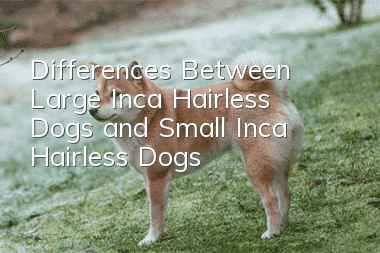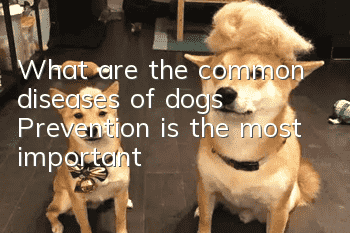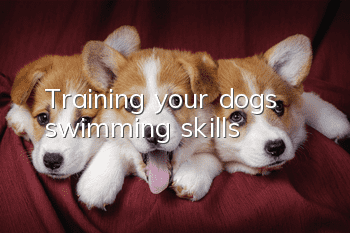Differences Between Large Inca Hairless Dogs and Small Inca Hairless Dogs

Alias of the Inca Hairless Dog: Peruvian Hairless Dog, Peruvian Inca Orchid Dog, Moon Flower Dog, Pero Flower God Dog, Peruvian Hairless Dog. And Inca hairless dogs are divided into two types: small Inca hairless dogs and large Inca hairless dogs. This dog has a popularity index of 1304 and is mainly bred as a bed-warming dog. The Inca Hairless Dog originated in the 13th century. Its country of origin is Peru. It is bred by viviparous method. Although the Inca Hairless Dog is rarely seen in its place of origin, it was once very popular in the Inca region.
1. Large Inca Hairless Dog-Introduction
(1)Basic information
The English name of the large Inca Hairless Dog is Inca Hairless Dog, also known as the Peruvian Hairless Dog. It is very loyal to its owner and longs to stay with its owner. It is a dog breed that attaches great importance to skin-to-skin relationship. The large Inca hairless dog has no coat, so its skin will become very dark once it is exposed to the sun. The skin color ranges from dark brown to gray, black, etc., and is mostly single color. This dog is highly alert and suitable to be kept as a guard dog, a toy dog, and a bed-warming dog.
(2) Living habits
The large Inca hairless dog originated in ancient times. It has no coat and does not require frequent grooming by its owner. It runs extremely fast, is lively and active, and is easy to get along with other partners. Able to play with children, suitable for city life, but difficult to adapt to cold climates. Therefore, it is relatively simple to raise and does not require special care for its appearance.
(3) Morphological characteristics
The most obvious feature of the large Inca hairless dog is that it has no coat all over its body, and its body shape is similar to that of a sighthound. The general height is 55-71cm and the weight is about 12-25kg. The head is small, triangular in shape, and the chest is narrow and deep; the ears are sparse and slightly feathered, and the ears are larger, which are wind-catching ears; the eyes are medium in size, black in color, and very watery. The limbs are long and have strong bones, which are good for running. The limbs have few short and fine feathers, which are difficult to spot without looking carefully.
2. Small Inca Hairless Dog-Introduction
(1)Basic information
The English name of the small Inca hairless dog: INCA HAIRLESS DOG. Its main purpose is to warm the bed. It is known as the "excellent bed warmer dog". The small Inca weighs 4-8kg, the medium-sized Inca weighs 8-12kg, and the large Inca weighs 12-25kg. . The lifespan of the small Inca hairless dog is as long as 11-12 years. This dog has a long history. When the Spaniards appeared, there were thin dogs.
(2) Morphological characteristics
The small Inca hairless dog has a small head and is very cute; its ears are small, wide at the base and thin at the tip; its eyes are small and black, with a certain expression. The limbs are of moderate length, well-developed muscles, and are good for running. They are speed athletes; the nose is dark black, which can be combined with pink.Intertwined to form floral patterns. This dog has a relatively gentle personality, is easy to contact, and is loyal to its owner.
3. Inca Hairless Dog-Raising Method
(1) Food feeding
Inca hairless dogs don’t eat a lot, so owners should give them an appropriate amount of food and not give too much. Giving too much will cause anorexia in dogs and lead to wasteful habits. The Inca Hairless Dog can mainly provide dog food, and provide him with meat and vegetables 1-2 times a week to ensure a balanced nutrition. (Remember to give your dog plenty of drinking water, and it is best to keep drinking water in the food bowl).
(2)Daily care
For owners of Inca hairless dogs, daily life is very easy. Because this dog has no coat, the owner does not need to spend time grooming it. The owner only needs to bathe him 1-2 times a month. You can also wipe his back with a wet towel at ordinary times, and Inca will enjoy it very much.
(3) Disease prevention
Puppies are more likely to suffer from a series of diseases when the seasons change, so owners can take their dogs for vaccinations 1-2 times a year. Clean the place where he lives regularly in daily life and let him stay in a clean environment. The most important thing is to ensure that the food you give your dog is fresh. If there is expired, spoiled, or fermented food, be sure to throw it away. Don’t be afraid of waste.
4. Inca Hairless Dog-Training Method
(1) Reward and punishment training method
The Inca Hairless Dog is a dog that is very attached to its owner and is extremely eager to be loved by its owner. The owner can use this feature to induce training. When he does well, give him lots of encouragement and affirmation to make him interested in training. When he is naughty and disobedient, the owner can stay away from him appropriately and ignore him, which is an appropriate punishment. This kind of training is very effective.
(2) Food and toy induction method
The Inca Hairless Dog is like a child, greedy and playful, and sometimes he will naughtily snatch toys from children. Therefore, before training, the owner can prepare some food and toys that the dog likes. During training, use the dog's desire for food and toys to induce him to complete the training. This method often gets twice the result with half the effort.
(3) Password and gesture guidance training method
The Inca Hairless Dog is smarter, but may be less receptive to some training words. Therefore, owners can develop some simple commands and gestures according to their own dog's situation; such as: stop, good, no, etc. During each training, you can repeatedly shout commands and gestures to train, so that the puppy's ability to accept it will be better.
5. How much does an Inca hairless dog cost?
The price of Inca Hairless Dogs is affected by factors such as region, age, size, appearance, gender, and bloodline. How old were you when you were born?The price of a 1-month-old puppy ranges from 500-800 yuan, and the price of a 1-2-year-old puppy with good appearance is around 1,000-2,200 yuan. Female dogs are 100-200 yuan more expensive than male dogs. The price of pure blood is more than 3,000 yuan.
Guess you like it
▪ Pug ▪ Lhasa Apso ▪ Dachshund ▪ Shih Tzu ▪ Pointer Hound
▪ Cocker Spaniel ▪ Poodle ▪ Airedale Terrier ▪ Bull Terrier ▪ Gordon Setter
Tags: Inca hairless dog
- What should I do if my dog’s stomach is not digested? Can I feed my dog stomach and digestive tablets?
- What are the symptoms of calcium deficiency in dogs?
- What kind of dog is suitable for a first-time dog owner? The best dog for a novice!
- Dog status training in the home
- Maltese dog personality and appearance characteristics
- There are little black bugs on the dog. What are they?
- Dog vomits dryly and foams at the mouth. What’s going on when a dog foams at the mouth?
- Does the ancient shepherd dog shed hair? How to deal with the shedding of the ancient shepherd dog? - The neighbor's pet
- When should Cane Corso dogs be vaccinated?
- How to treat a dog suffering from eczema?



